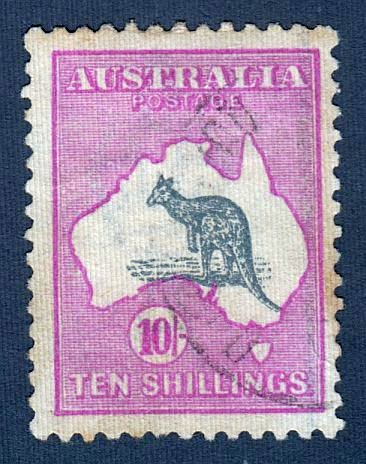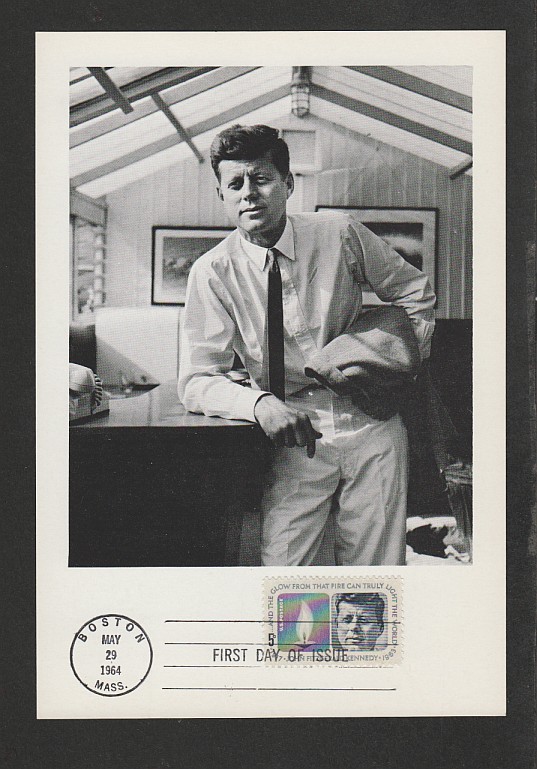
Discussion - Member to Member Sales - Research Center

Discussion - Member to Member Sales - Research Center


Login to Like
this post
Lovely piece!
Early matching usages (EMUs) prior to December of 1862 are quite sought after. To me, the fact that it is an October 1862 usage is more alluring than the persona involved. If you ever decide to part with it please let me know.

Login to Like
this post
Hi David,
What a great find. Pity about the stamp that has been added after the fact, but this is definitely a keeper.
Regards ... Tim.

Login to Like
this post
Just out of curiosity, what makes you think the stamp was added after the fact? Unlike front-of-book usages, most revenue cancels, especially manuscript cancels, do not tie the stamp to the document.
I see nothing to indicate that the stamp was not affixed at the time of the transaction.
The only times tying is a concern with revenues, in my opinion, is when you are dealing with items where adding the stamp creates a valuable philatelic item, which isn't the case here. There's not enough of a market or change in value to justify adding a stamp to this item after the fact.
Items where I *do* consider tying when gauging authenticity:
1. Bisects. Too many "created" items out there, especially on CDVs.
2. Illegal/improper usages of revenues as postage or postage as revenue. These are popular items, and there is too much incentive to fabricate.

Login to Like
this post
I have to agree with USRevenues: We collectors are so used to being warned about bogus stamps and covers that we begin to see perfectly benign items as suspect. When Tim noted that it wasn't tied to the cheque (note that correct spelling!  ), I thought about posting my thoughts, which turn out to have been along the same lines as US Revenue's comments. Anything, of course, can be altered or even created out of whole cloth, so to speak, but the sheer volume of common philatelic collectibles argues against more than a tiny percentage being bogus creations, especially when they are sold at dirt cheap prices or are included, as the cheque was, in a large unsorted lot, eh?
), I thought about posting my thoughts, which turn out to have been along the same lines as US Revenue's comments. Anything, of course, can be altered or even created out of whole cloth, so to speak, but the sheer volume of common philatelic collectibles argues against more than a tiny percentage being bogus creations, especially when they are sold at dirt cheap prices or are included, as the cheque was, in a large unsorted lot, eh?
Bob

Login to Like
this post
My first post on this board. Here's one of my favorites:


3 Members
like this post.
Login to Like.
Nice maritime vignette. Those are always neat.
Some of my favorite checks (technically some are sight drafts, but they are check-ish in format)... and yes, I have a thing for illegal/improper usages:
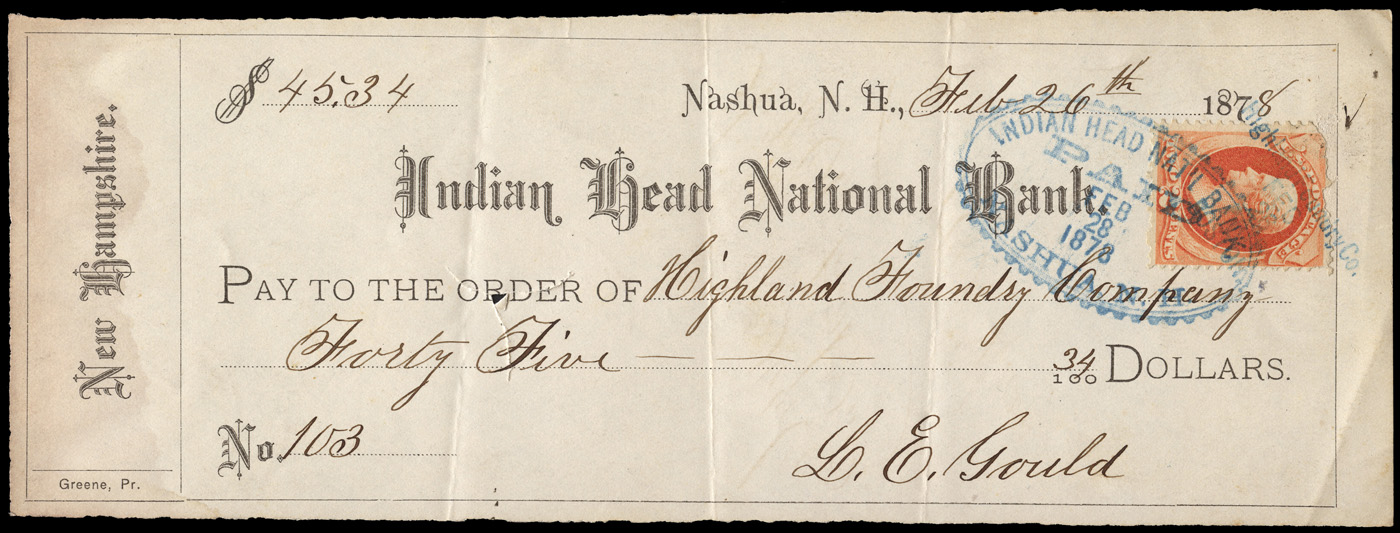
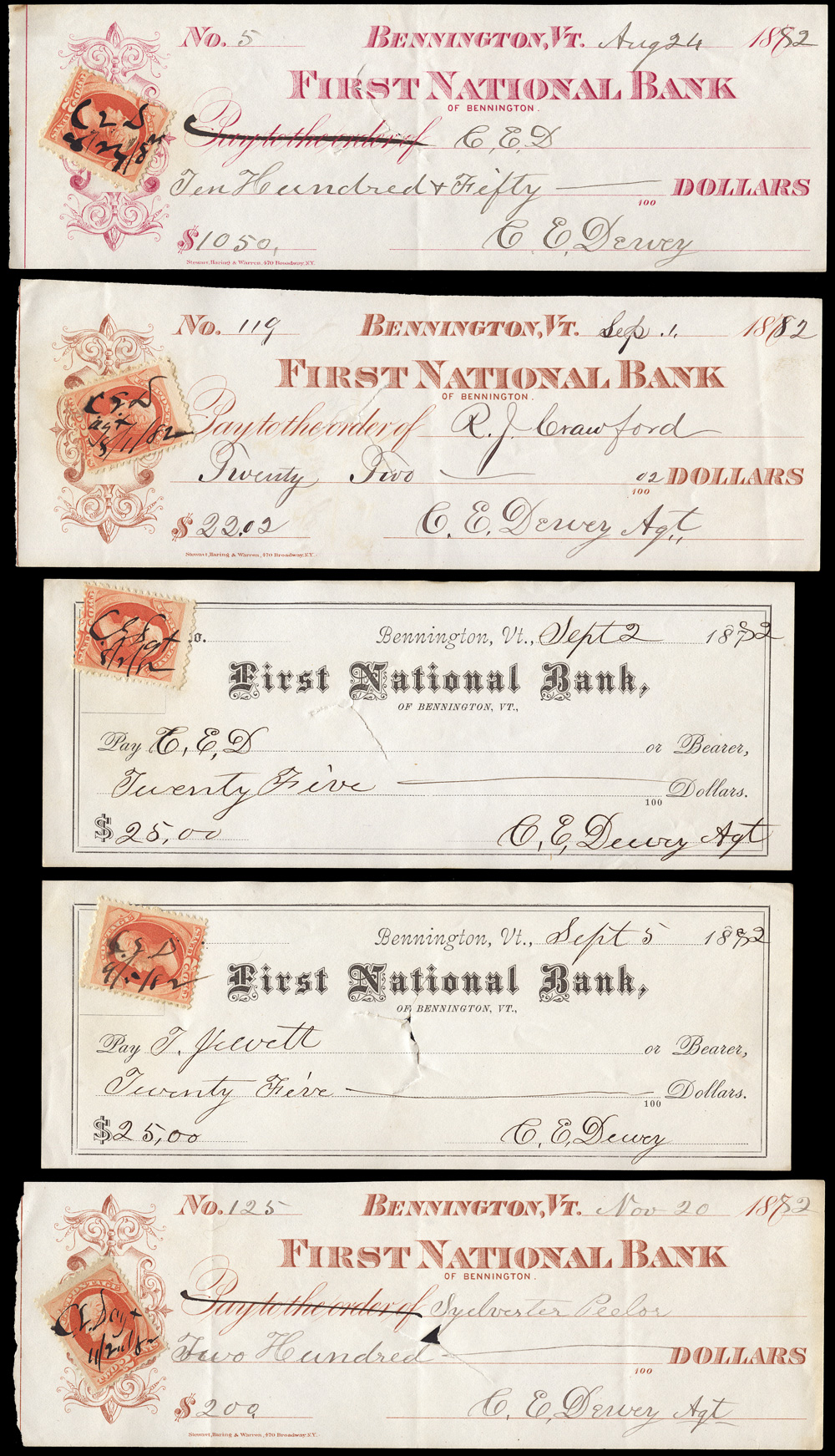
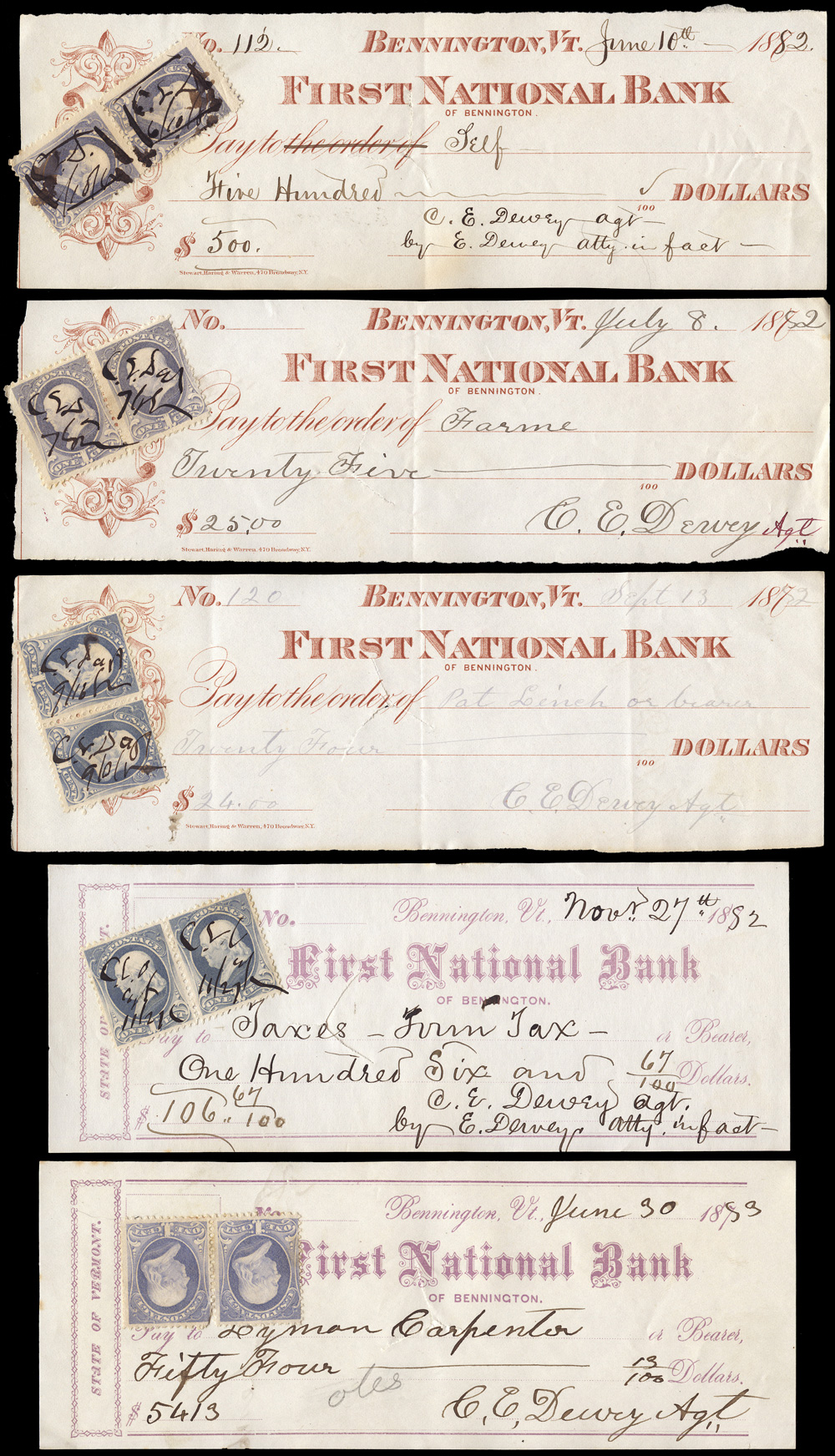
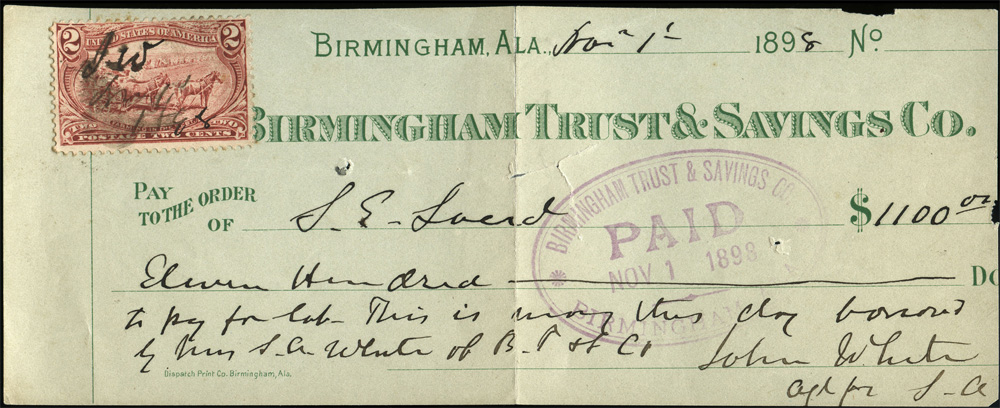
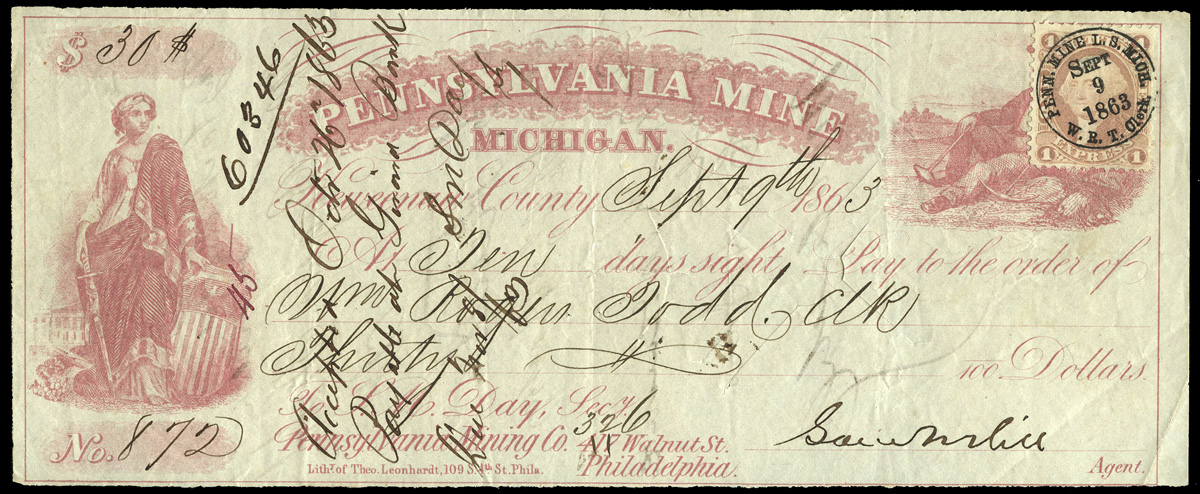
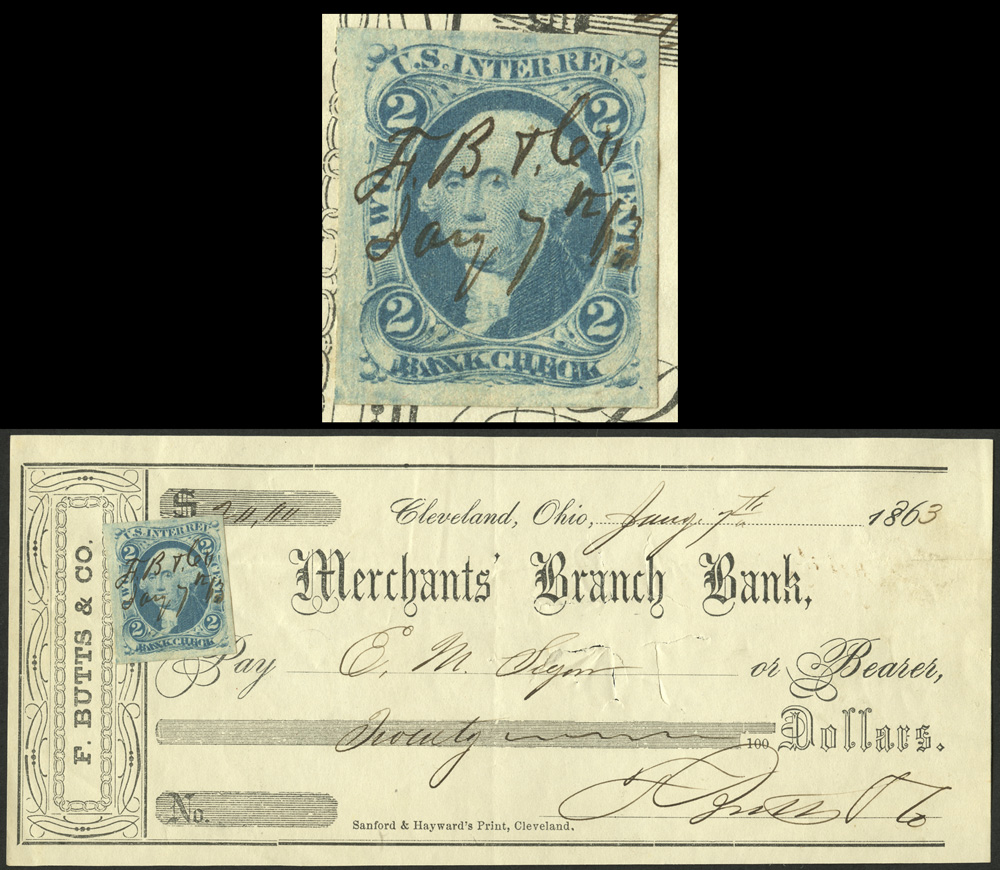
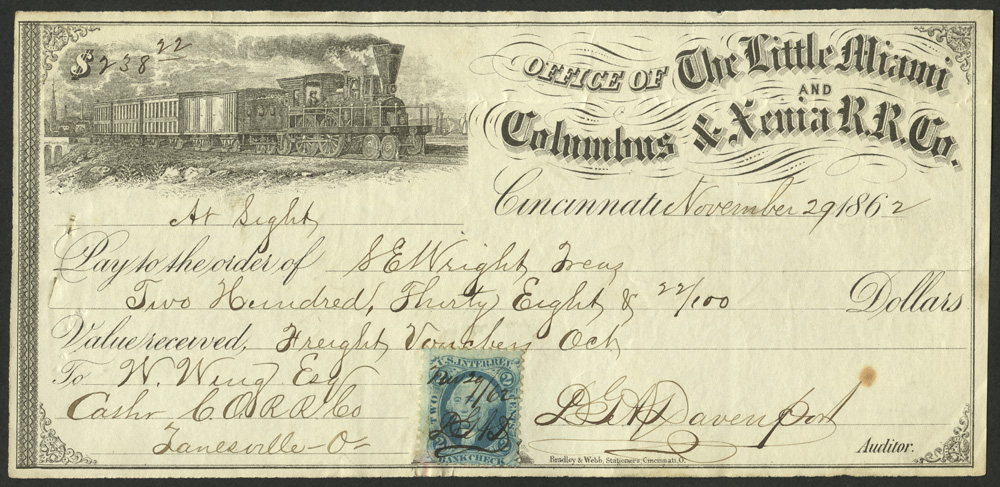
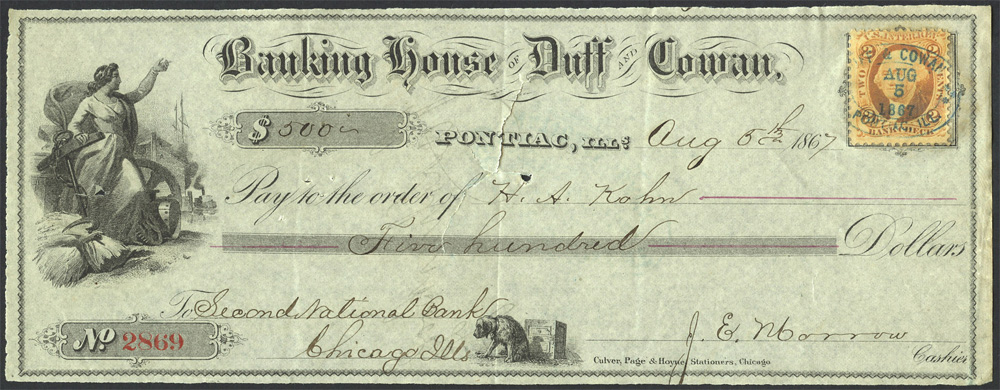
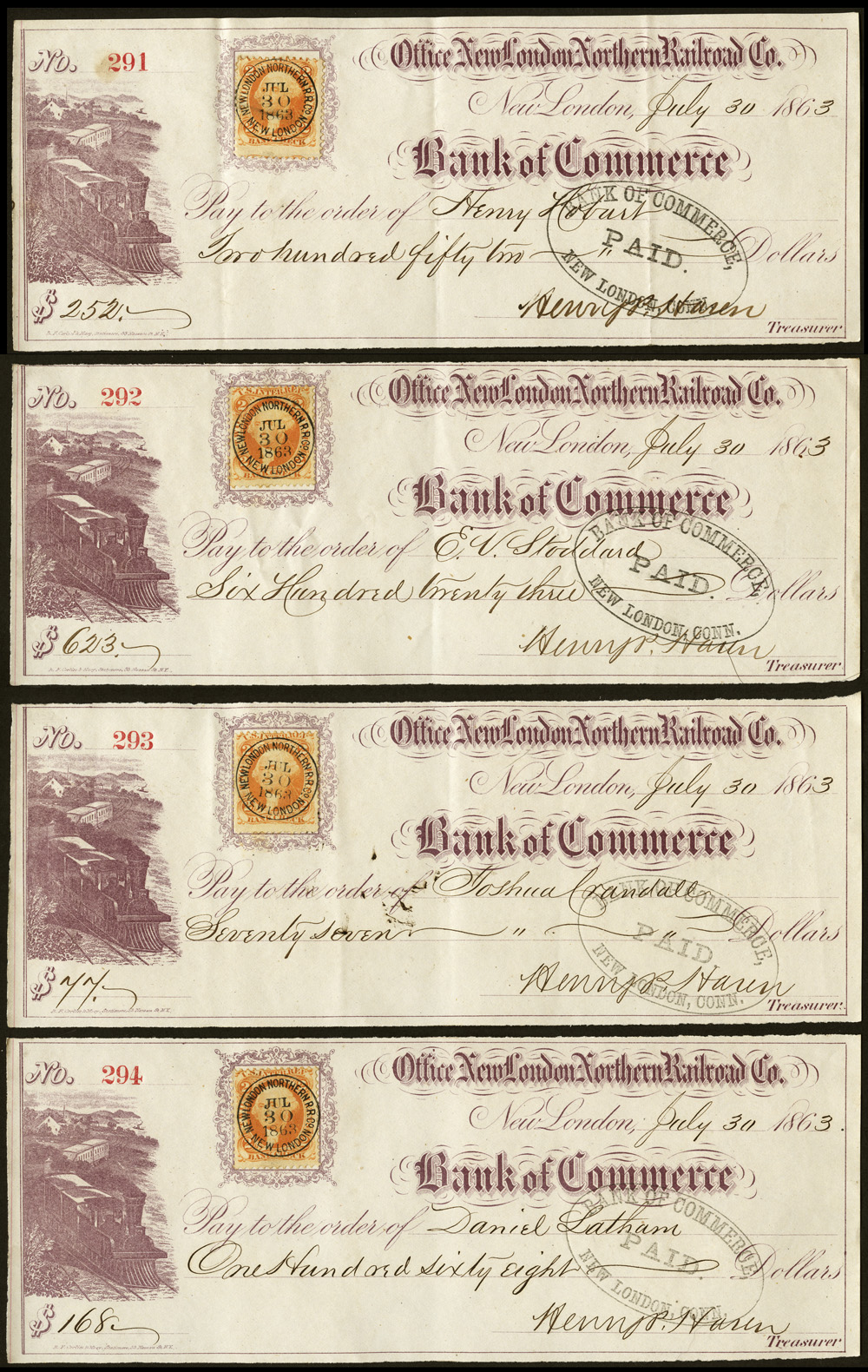
Nice early usage:
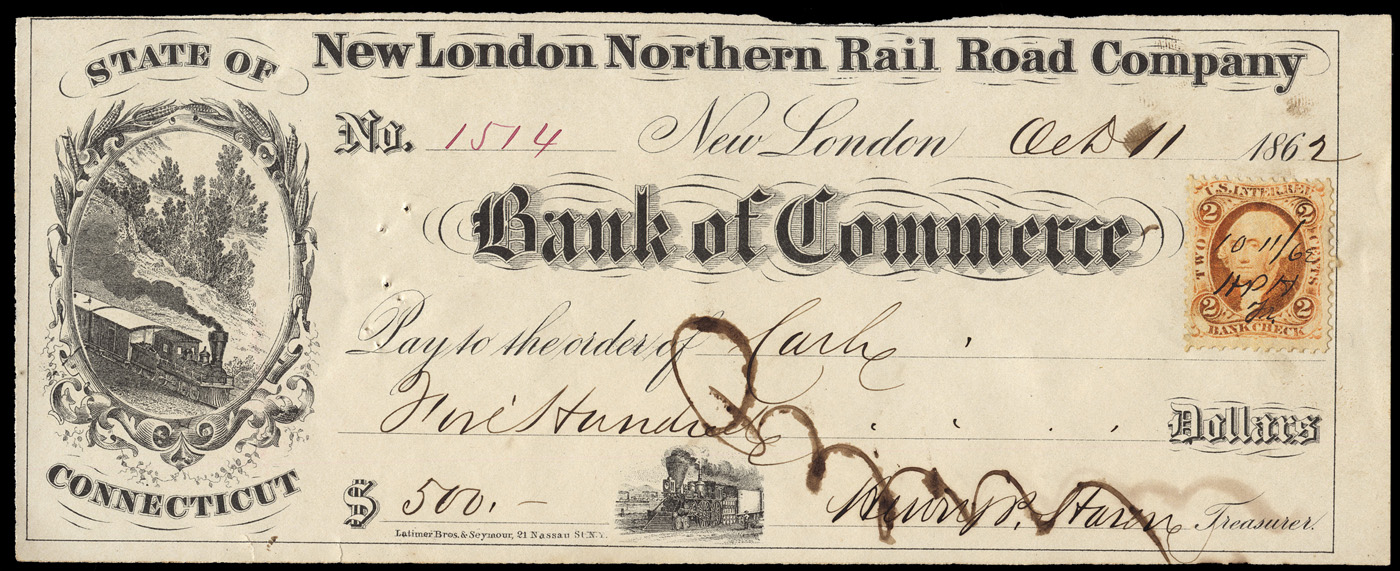
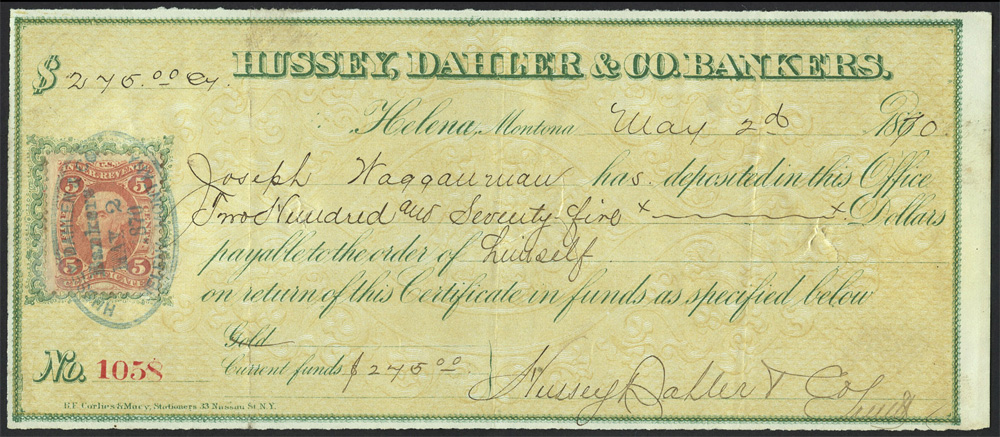
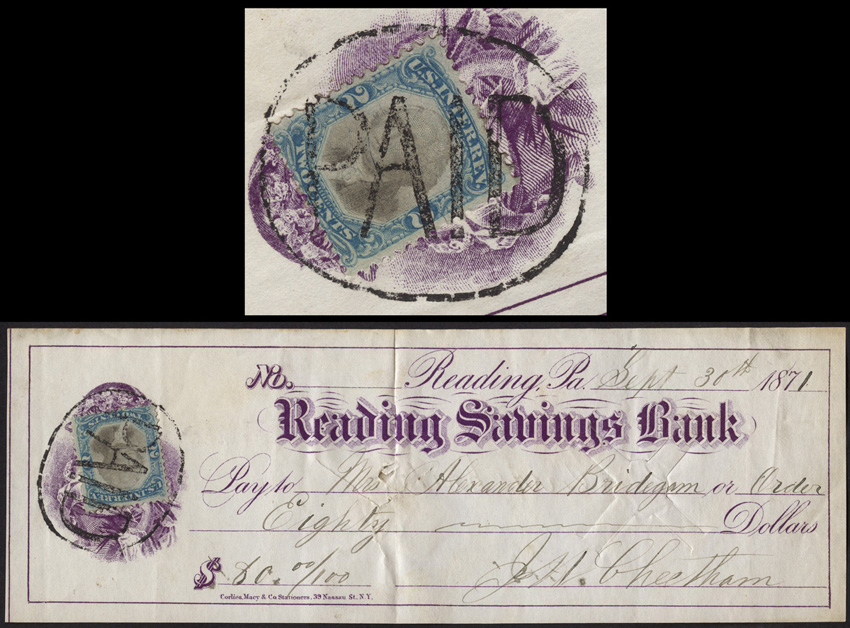
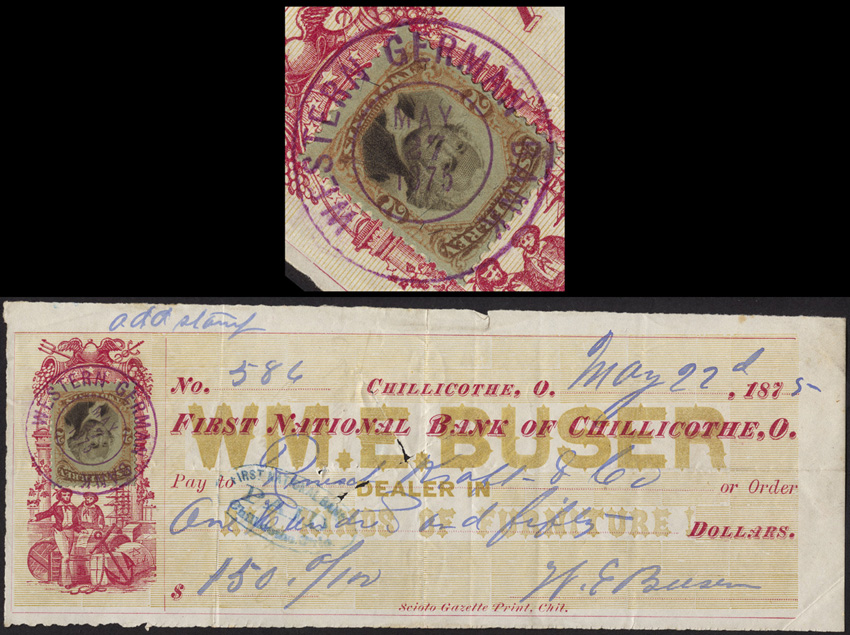
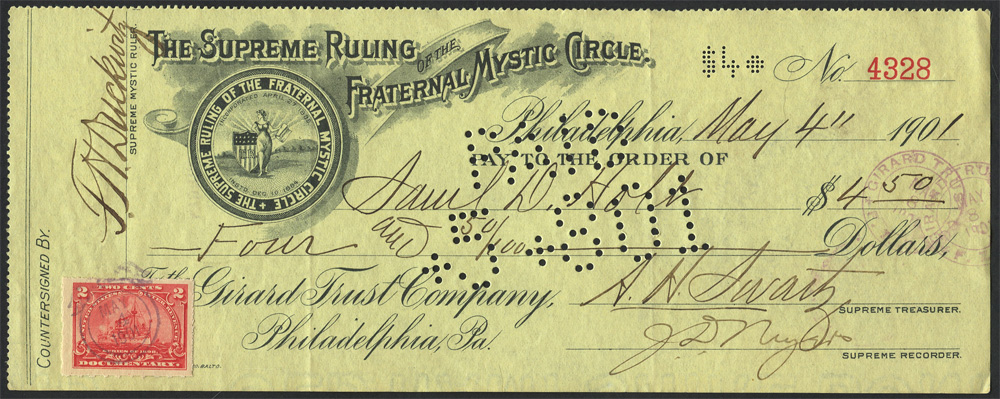
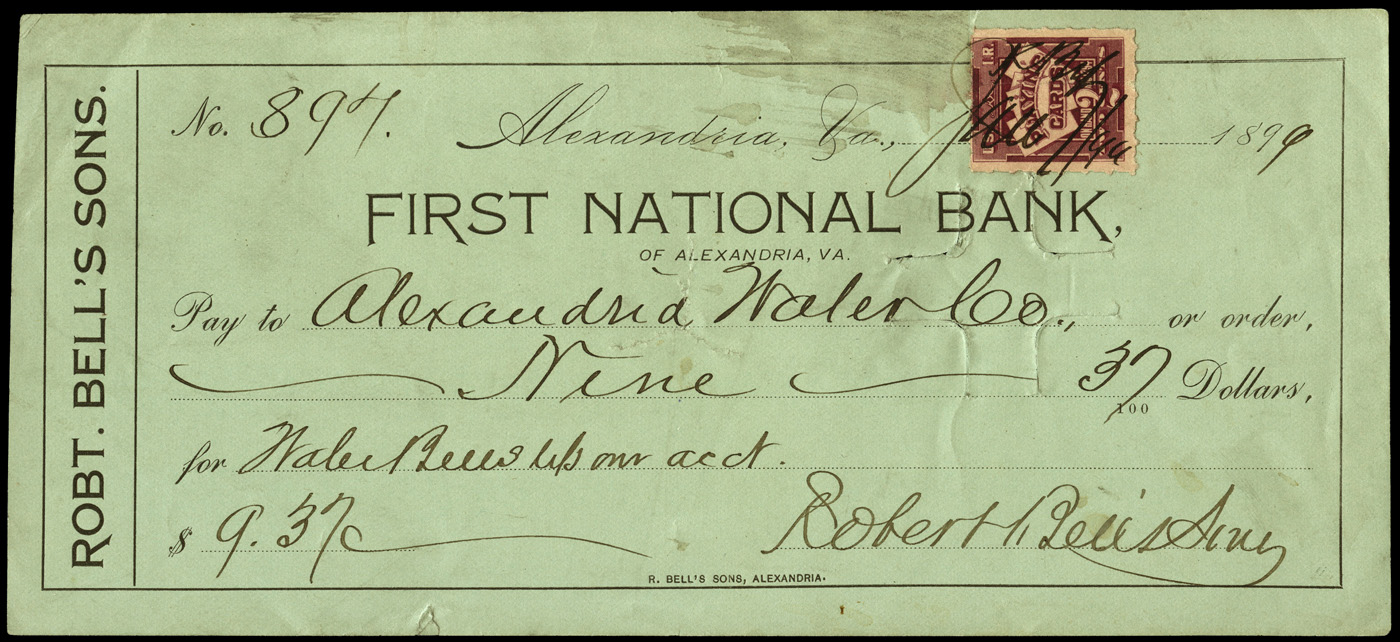
Interesting in that both stamp and document are dated the day BEFORE the tax went into effect. More scarce than 1st day of tax usages that go for big bucks.
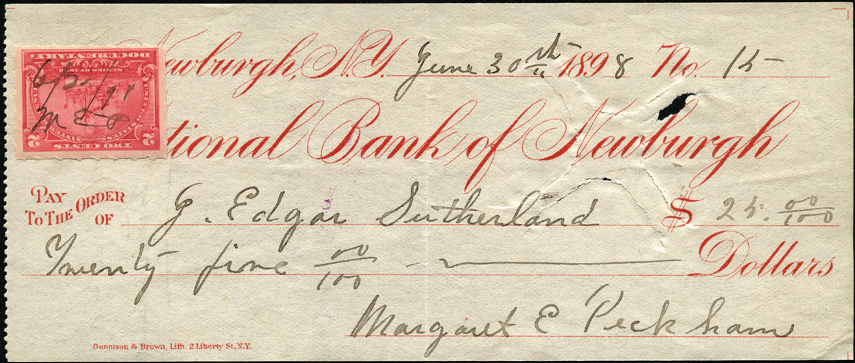
Almost unheard of on document, this is the vermilion error of color (with PF cert).
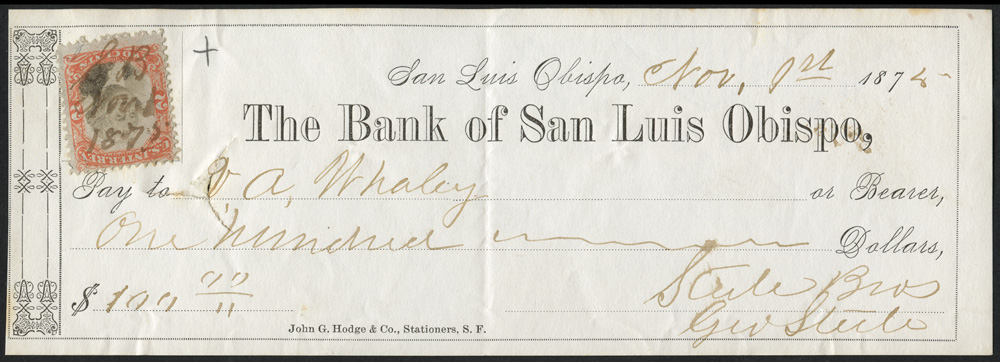
Original catalog listing example of R106b.
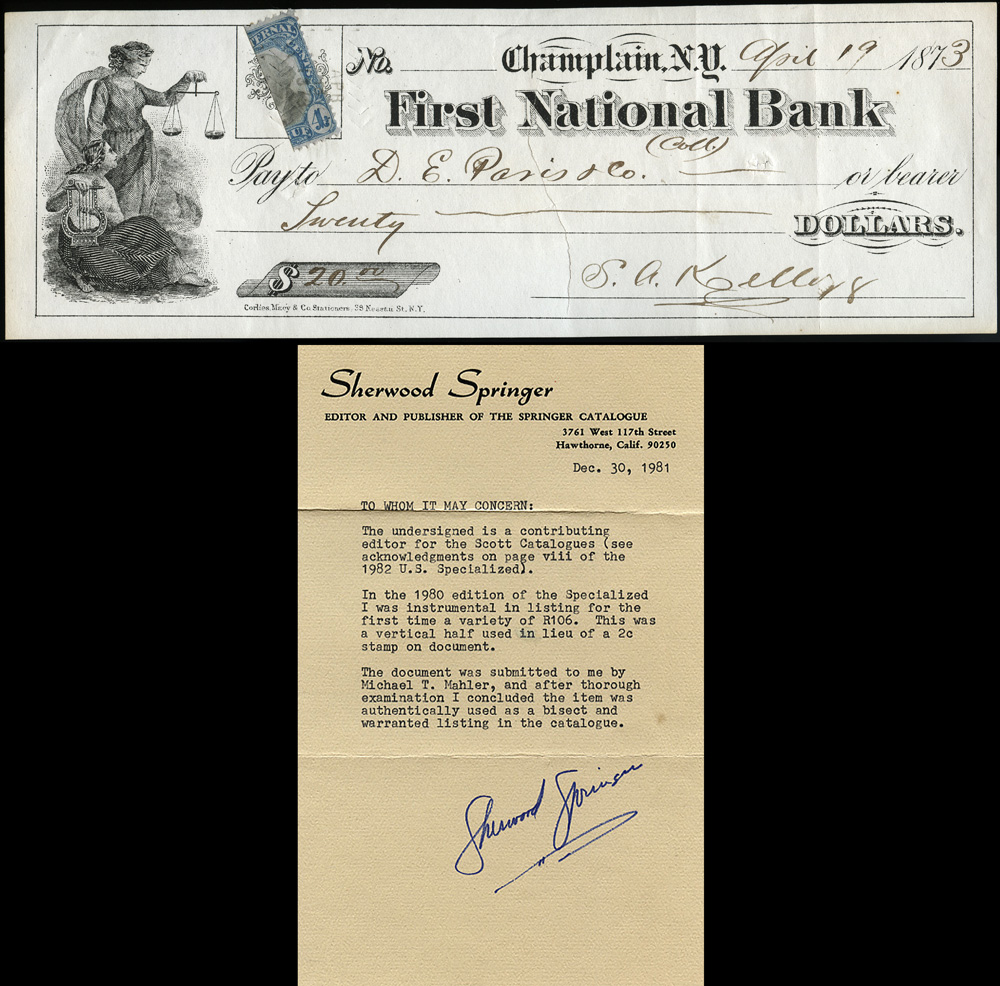

1 Member
likes this post.
Login to Like.

03:51:26pm
Wow! Some of those people has DEEP pockets in the 1860's and 1870's !

Login to Like
this post

re: CIVIL WAR CHECKS
Lovely piece!
Early matching usages (EMUs) prior to December of 1862 are quite sought after. To me, the fact that it is an October 1862 usage is more alluring than the persona involved. If you ever decide to part with it please let me know.

Login to Like
this post

re: CIVIL WAR CHECKS
Hi David,
What a great find. Pity about the stamp that has been added after the fact, but this is definitely a keeper.
Regards ... Tim.

Login to Like
this post

re: CIVIL WAR CHECKS
Just out of curiosity, what makes you think the stamp was added after the fact? Unlike front-of-book usages, most revenue cancels, especially manuscript cancels, do not tie the stamp to the document.
I see nothing to indicate that the stamp was not affixed at the time of the transaction.
The only times tying is a concern with revenues, in my opinion, is when you are dealing with items where adding the stamp creates a valuable philatelic item, which isn't the case here. There's not enough of a market or change in value to justify adding a stamp to this item after the fact.
Items where I *do* consider tying when gauging authenticity:
1. Bisects. Too many "created" items out there, especially on CDVs.
2. Illegal/improper usages of revenues as postage or postage as revenue. These are popular items, and there is too much incentive to fabricate.

Login to Like
this post

re: CIVIL WAR CHECKS
I have to agree with USRevenues: We collectors are so used to being warned about bogus stamps and covers that we begin to see perfectly benign items as suspect. When Tim noted that it wasn't tied to the cheque (note that correct spelling!  ), I thought about posting my thoughts, which turn out to have been along the same lines as US Revenue's comments. Anything, of course, can be altered or even created out of whole cloth, so to speak, but the sheer volume of common philatelic collectibles argues against more than a tiny percentage being bogus creations, especially when they are sold at dirt cheap prices or are included, as the cheque was, in a large unsorted lot, eh?
), I thought about posting my thoughts, which turn out to have been along the same lines as US Revenue's comments. Anything, of course, can be altered or even created out of whole cloth, so to speak, but the sheer volume of common philatelic collectibles argues against more than a tiny percentage being bogus creations, especially when they are sold at dirt cheap prices or are included, as the cheque was, in a large unsorted lot, eh?
Bob

Login to Like
this post

re: CIVIL WAR CHECKS
My first post on this board. Here's one of my favorites:


3 Members
like this post.
Login to Like.

re: CIVIL WAR CHECKS
Nice maritime vignette. Those are always neat.
Some of my favorite checks (technically some are sight drafts, but they are check-ish in format)... and yes, I have a thing for illegal/improper usages:









Nice early usage:






Interesting in that both stamp and document are dated the day BEFORE the tax went into effect. More scarce than 1st day of tax usages that go for big bucks.

Almost unheard of on document, this is the vermilion error of color (with PF cert).

Original catalog listing example of R106b.


1 Member
likes this post.
Login to Like.
A Service Dog gives a person with a disability independence. Never approach, distract or pet a working dog, especially when (s)he is in harness. Never be afraid to ask questions to the handler (parent).
24 Jan 2015
03:51:26pm
re: CIVIL WAR CHECKS
Wow! Some of those people has DEEP pockets in the 1860's and 1870's !

Login to Like
this post
